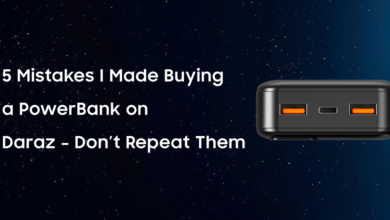Seamless International Transactions: A Guide for Scaling with PayGlocal

Introd uction
Indian businesses are going global. Whether you’re a D2C brand, SaaS startup, or exporter, international customers are finding you. But there’s a catch: many of them don’t complete the purchase. Why? Because the payment process feels unfamiliar or untrustworthy.
Imagine this. A customer from the US visits your site, adds products to the cart, reaches checkout, and suddenly sees an INR amount and card fields that don’t match their region. They exit. You lose a sale that was almost yours.
This is where seamless international transactions become vital. A friction-free cross-border payment experience doesn’t just improve conversions. It builds trust and enables real growth.
In this guide, we’ll explore why international payments often break down, what makes a cross-border transaction “seamless,” and how platforms like PayGlocal can help Indian businesses scale internationally—without worrying about compliance, currency, or customer confusion.
The Real Pain Behind International Transactions
Why Customers Drop Off at Checkout
One of the most common issues with international customers is a lack of localized payment experience. They’re ready to buy, but when they see only INR or unfamiliar card options, hesitation kicks in.
Even small frictions—like not knowing how much they’re paying in their own currency—can make them abandon the cart. In some cases, banks may also reject foreign cards due to incorrect risk flags, even if the buyer is genuine.
A popular Indian D2C skincare brand saw its US cart abandonment rate drop by 12% when they started showing prices in USD and added American Express and PayPal as options. That’s real revenue recovered through better payment design.
Why Traditional Gateways Fall Short
Most payment gateways were built with domestic users in mind. Their cross-border capabilities are often added on later, without truly thinking through customer behavior across regions. This results in a checkout experience that’s technically functional—but practically broken.
You end up with a global customer seeing local prices but unable to pay using local methods. And on the backend, your finance team struggles with multiple reports, reconciliation issues, and unclear settlement timelines.
The cost? Lost trust, reduced conversion, and operations complexity that grows with every new market you enter.
What Makes an International Transaction Truly Seamless?
A Familiar Experience for the Customer
The first step is localization. If a customer in Dubai visits your store, they should see prices in AED. They should also be able to pay using methods they already use, like local bank transfers or wallets. This feels intuitive and safe. They trust the process because it looks and works the way they expect.
Even if your product is great, buyers may hesitate if the payment feels foreign. The smoother the experience, the more likely they are to complete the purchase.
Simplified Operations for the Business
On your end, a seamless transaction means fewer manual processes. You shouldn’t have to deal with multiple reconciliation sheets, unpredictable forex fees, or delays in fund settlement.
A good cross-border payment platform should also handle compliance. That includes RBI guidelines, GST rules, and foreign exchange management regulations. Without this, international growth can quickly become a compliance risk.
See also: Advantages of Optical TPU Technology for Clear Bra Owners
How PayGlocal Simplifies Cross‑Border Payments
One-Time Integration for Global Coverage
PayGlocal allows businesses to offer international payment methods and currencies through a single integration. You don’t need to connect with multiple providers across countries. Once integrated, your platform becomes ready to serve customers from the US, UK, UAE, Australia, and beyond.
This simplifies your development process. You avoid lengthy technical customizations each time you enter a new geography.
Built-In Fraud Management for Global Buyers
Cross-border fraud differs from domestic risk. A transaction that seems suspicious in one country may be common in another. That’s why you need fraud filters tuned for global traffic.
PayGlocal’s risk engine uses behavioral patterns, location-based logic, and dynamic authentication layers to detect real threats without blocking legitimate users. This balance is critical. Too much fraud control leads to false declines. Too little puts your revenue at risk.
Businesses using PayGlocal have reported lower chargeback ratios, fewer rejected payments, and a more consistent checkout experience for international customers.
Transparent Currency Conversion and INR Settlement
One of the most useful features is real-time currency conversion. Your customer sees the price in their local currency. You receive the payment in INR. There’s no hidden conversion fee or delay.
A 2022 Corpay whitepaper shows the average currency‑conversion markup is 3.39%, and World Bank data places remittance costs at 6.5%, meaning transparent real-time pricing can save customers—and businesses—substantial money.
This helps maintain clean records. You get consolidated reporting, automated reconciliation, and clear visibility into where your revenue comes from. And you don’t have to worry about fluctuating forex rates or international banking delays.
When Should You Start Thinking About Cross‑Border Payments?
You’re Already Getting International Visitors
If more than 10% of your website traffic comes from outside India, you’re already in the global game—even if unintentionally. These are potential buyers who are leaving because your payment experience doesn’t work for them.
Even if you haven’t actively expanded, a payment-ready system lets you convert international demand without overhauling your whole product or website.
Support Requests About Payments Are Increasing
Are your customers from the US or Europe emailing about currency confusion or payment failure? That’s a clear signal your current system isn’t working for them.
At this point, sticking with a domestic-first setup becomes a blocker. Your support team gets stretched, and your brand takes a hit every time a buyer has a poor checkout experience.
You’re Scaling in Global Markets
If you’re actively targeting regions like the Middle East, Southeast Asia, or North America, building trust with local buyers is critical. Payment plays a major role in that trust.
Without a localized payment layer, you lose the momentum of your marketing and sales efforts in those regions.
Why Indian Businesses Are Choosing PayGlocal
Designed with Indian Compliance in Mind
PayGlocal isn’t just another payment platform with global features. It’s designed for Indian businesses dealing with Indian regulations.
It takes into account RBI guidelines for inbound transactions, helps with GST filing on cross-border income, and ensures FEMA-compliant settlements. This removes the guesswork and risk from your global payments strategy.
You don’t need to hire a financial consultant or legal advisor just to start accepting USD or EUR payments.
Merchant-Friendly Support and Tools
International payments aren’t just about tech. They’re about operations, support, and the ability to respond to customer needs.
PayGlocal provides round-the-clock support, offers flexible settlement options (daily, weekly, or on request), and includes tools for performance monitoring, reporting, and fraud tracking.
This creates confidence not just for your end customers—but for your internal teams handling finance, operations, and growth.
Final Thoughts
Cross-border growth starts with a simple truth: people buy when they trust. And a familiar, fast, and local-feeling payment experience is one of the fastest ways to earn that trust.
If your international traffic is growing but conversions aren’t, your payments infrastructure might be holding you back. Seamless global payments aren’t a luxury—they’re a baseline expectation.
By investing in a solution built for seamless international transactions, you reduce friction, lower operational overhead, and unlock real revenue potential from across the world.
It’s not about going global overnight. It’s about being ready when the world comes to you.





